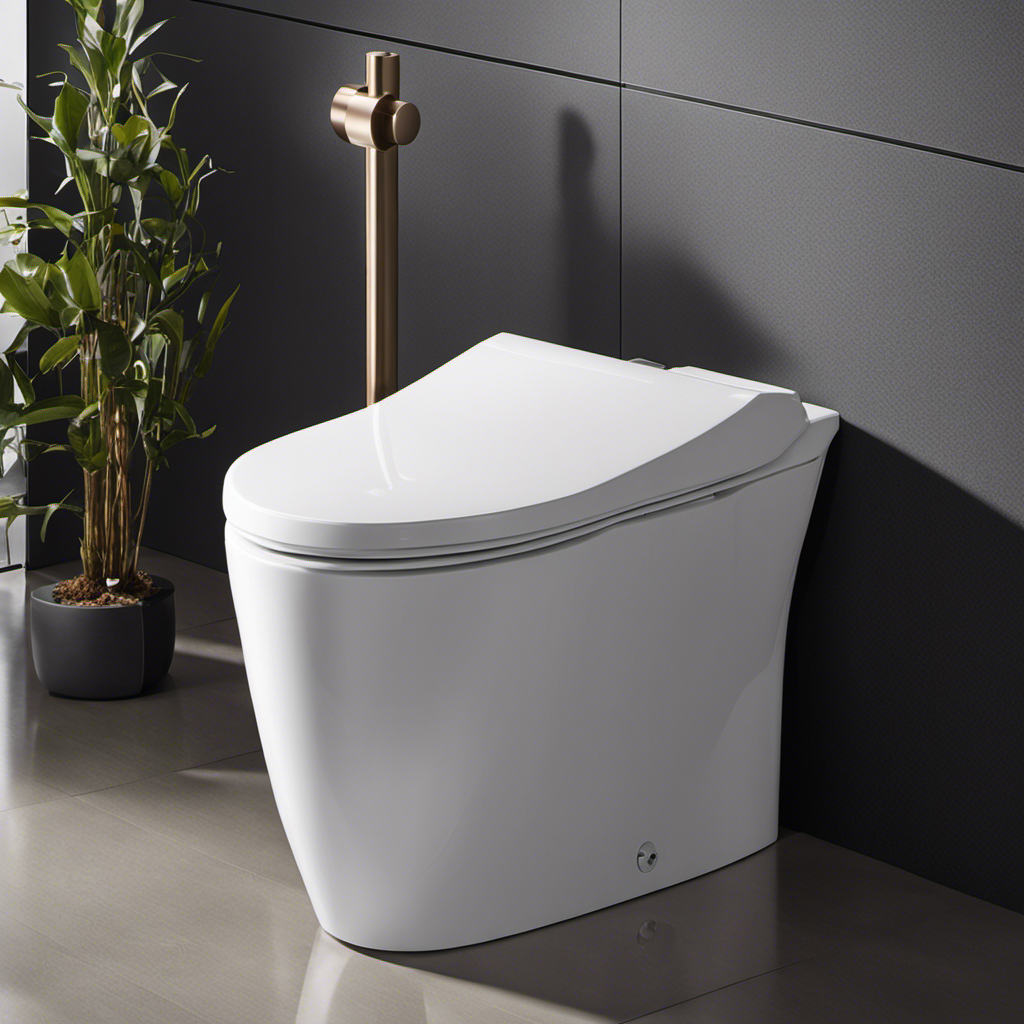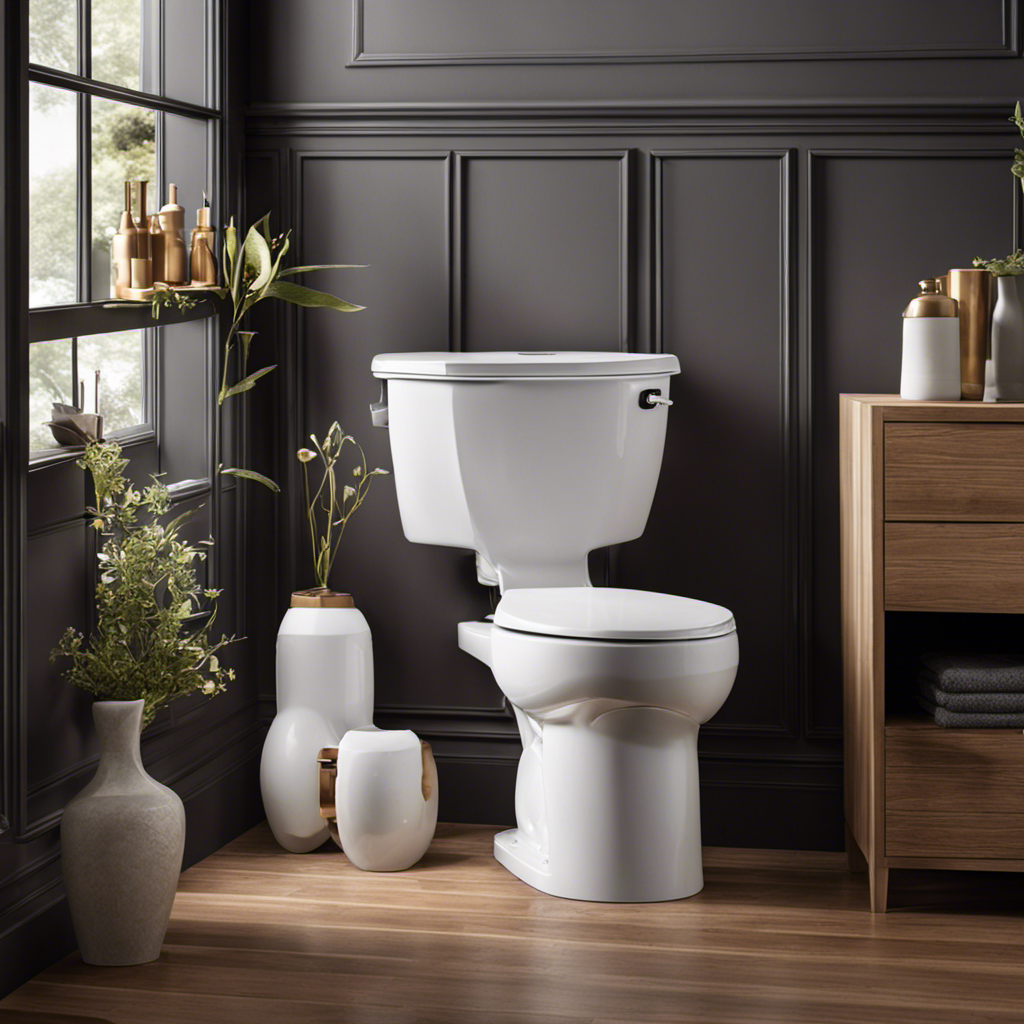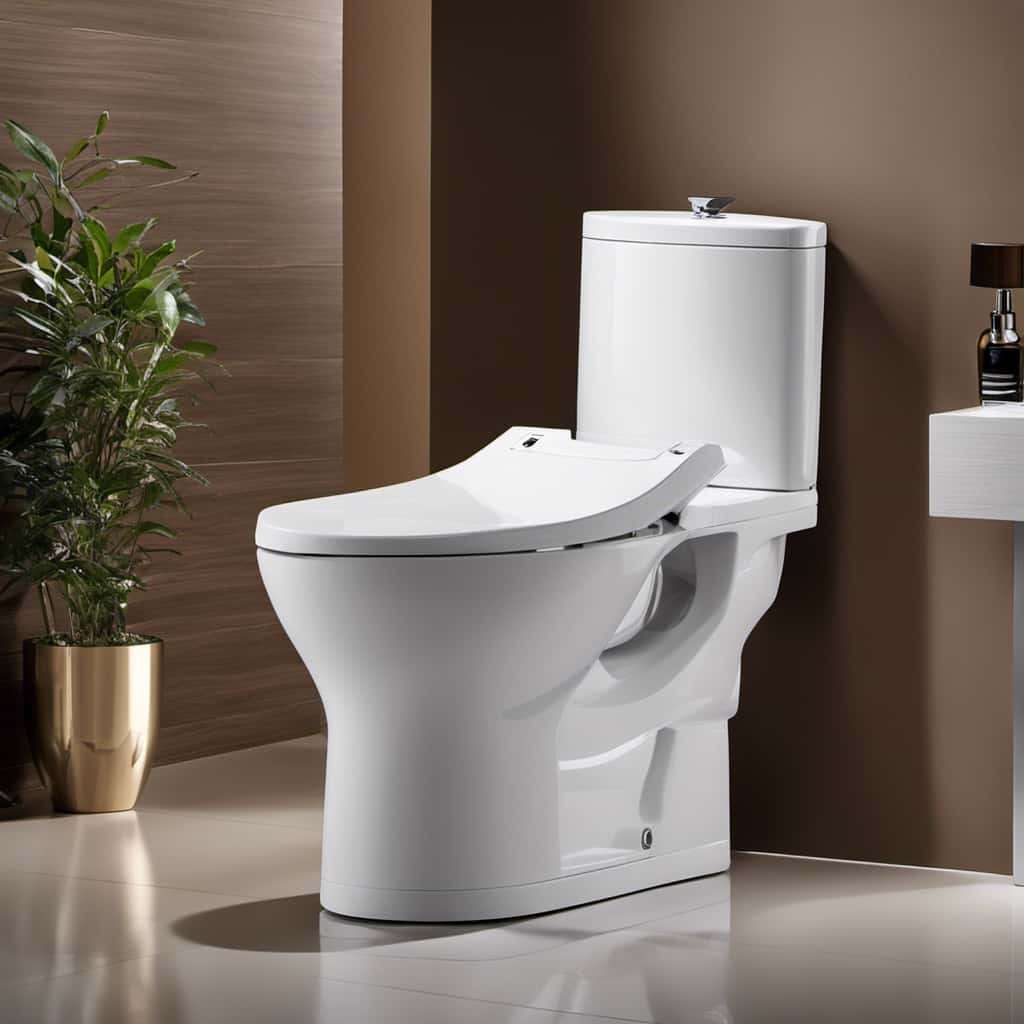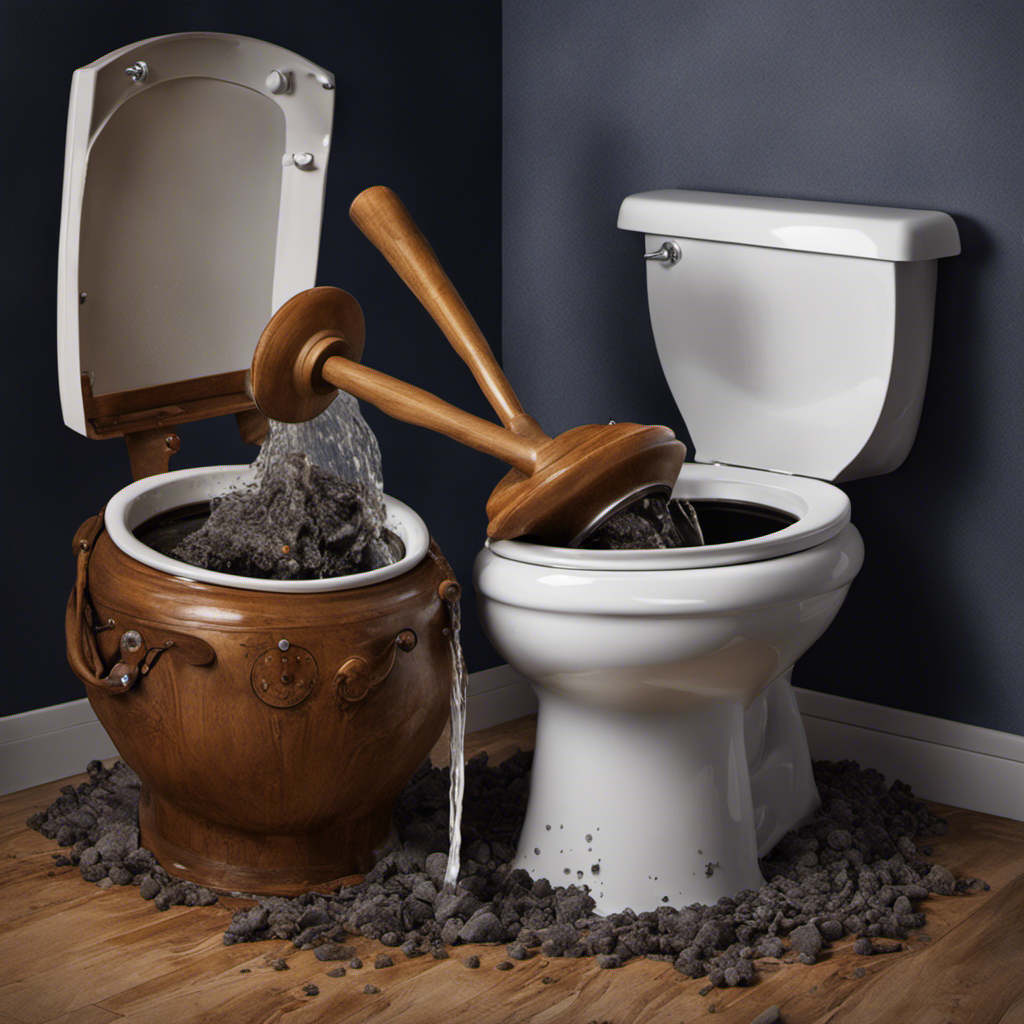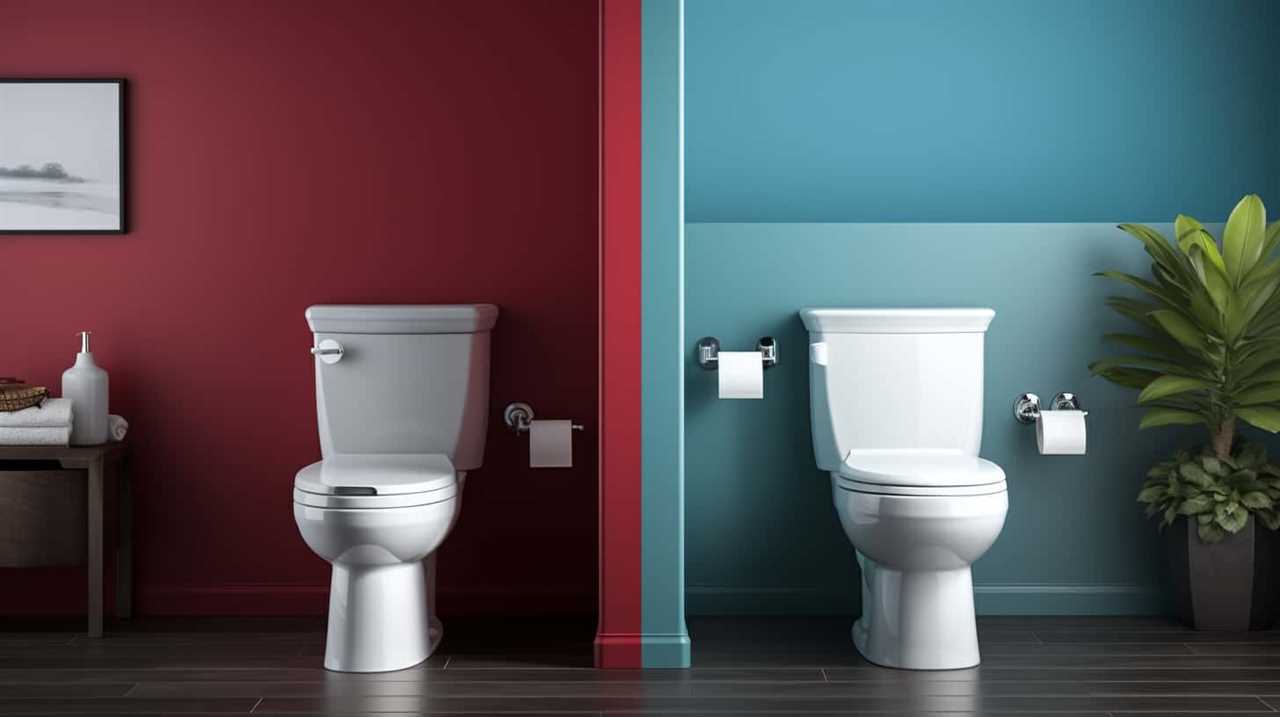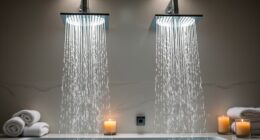When it comes to choosing a toilet, there’s more than meets the eye. As the saying goes, ‘The devil is in the details,’ and this couldn’t be truer when it comes to finding the perfect porcelain throne.
In this article, I’ll guide you through the process of picking the right toilet for your needs. We’ll explore different types of toilets, factors to consider, water efficiency, bowl shape and size, and additional features.
Get ready to make an informed decision – let’s flush out the possibilities!
Key Takeaways
- Consider the size of your bathroom and measure the available space for a comfortable fit.
- Set a budget and find a toilet within your price range.
- Review the installation requirements and necessary skills/tools, as some toilets may require professional help.
- Look for water-efficient toilets with low flush volume and certifications such as WaterSense.
Types of Toilets
Now let’s talk about the different types of toilets you can choose from.
When it comes to toilet installation and maintenance, it’s essential to understand the various options available.
The first type is the gravity-fed toilet, which uses the force of gravity to flush waste down the drain. These toilets are relatively easy to install and maintain, making them a popular choice for many households.
Another option is the pressure-assisted toilet, which uses compressed air to enhance the flushing power. These toilets are known for their efficient flushing and are especially useful in commercial settings.
Finally, we have the dual-flush toilet, which allows users to choose between a full flush or a reduced flush for liquid waste. This type of toilet promotes water conservation and is becoming increasingly popular.
Now that we’ve covered the types of toilets, let’s move on to the factors you should consider when making your decision.
Factors to Consider
One important factor to consider when choosing a toilet is the size of your bathroom. It’s crucial to measure the available space to ensure the toilet will fit comfortably.
Additionally, you should consider the price range and installation requirements. Toilets come in a wide range of prices, so it’s important to set a budget and find a toilet that fits within that range.
When it comes to installation, some toilets require more complex plumbing and may need professional help, while others can be easily installed by homeowners. It’s important to review the installation requirements and determine if you have the necessary skills and tools to complete the installation yourself or if you need to hire a professional plumber.
Water Efficiency
To make sure you’re conserving water, it’s important to consider the water efficiency of the toilet you’re choosing. Water-saving technology has come a long way, and there are several factors to keep in mind when evaluating the water efficiency of a toilet:
-
Flush volume: Look for toilets with low flush volume, typically around 1.28 gallons per flush (GPF). These toilets use less water per flush compared to older models that can use up to 3.5 GPF.
-
Dual flush: Some toilets offer a dual flush option, allowing you to choose between a partial flush for liquid waste and a full flush for solid waste. This helps to further reduce water consumption.
-
Pressure-assisted flushing: This type of technology uses compressed air to create a powerful flush, effectively clearing the bowl with less water.
-
Water-efficient design: Consider toilets with a compact bowl and trapway design, which can help improve flushing performance while using less water.
-
Certifications: Look for toilets that are certified by organizations like WaterSense, which ensures that the toilet meets water efficiency standards.
Bowl Shape and Size
Consider opting for a toilet with a compact bowl and trapway design, as this can improve flushing performance while using less water.
When choosing a toilet, it’s important to consider the flushing power and the height options. A toilet with a compact bowl and trapway design provides a more powerful flush, ensuring that waste is efficiently and effectively removed with each flush. This can prevent clogs and reduce the need for multiple flushes, ultimately saving water.
Additionally, height options are important for comfort and accessibility. Some toilets offer a standard height, while others provide a higher seat for those who may have mobility issues or prefer a more comfortable seating position.
By considering both flushing power and height options, you can select a toilet that meets your needs and preferences.
Now let’s move on to discuss additional features that you should consider when choosing a toilet.
Additional Features
When it comes to additional features, you’ll find that toilets can offer options such as dual flush, soft close lids, and built-in bidets. These features can greatly enhance your bathroom experience and provide added convenience and comfort.
Here are some other additional features that you may consider when choosing a toilet:
-
Self-cleaning technology: Some toilets come with self-cleaning capabilities, which make maintenance and cleaning a breeze.
-
LED lighting: Built-in LED lights can illuminate the toilet bowl, making it easier to use during nighttime trips to the bathroom.
-
Heated seats: Nothing beats the comfort of a heated toilet seat, especially during cold winter months.
-
Air deodorizers: These built-in deodorizers help eliminate unpleasant odors, ensuring a fresh-smelling bathroom.
-
Adjustable flushing mechanisms: Some toilets offer adjustable flushing options, allowing you to control the water usage and conserve water.
Considering these additional features, along with the bidet attachment and flushing mechanism, will help you make an informed decision when choosing the right toilet for your needs.
Frequently Asked Questions
Are Bidet Toilets Included in the Types of Toilets Discussed?
Yes, bidet toilets are included in the types of toilets discussed. Bidet toilet features offer enhanced hygiene and convenience. However, they may be more expensive and require additional plumbing. Consider the pros and cons of bidet toilets before making a decision.
How Do I Determine the Right Toilet Height for My Needs?
To determine the right toilet height for your needs, consider your personal comfort and accessibility. Ensure the toilet seat is at a height that allows for easy sitting and standing. Also, check the flushing mechanism for efficiency and reliability.
Is It Possible to Install a Wall-Mounted Toilet in My Bathroom?
Yes, it is possible to install a wall-mounted toilet in your bathroom. Wall-mounted toilets have advantages like saving space, easy cleaning, and a modern look. Consider hiring a professional for proper installation.
Does the Article Cover the Maintenance and Cleaning Requirements for Different Types of Toilets?
The article covers maintenance requirements and provides helpful cleaning tips for different types of toilets. It offers detailed information on how to keep your toilet clean and in good condition.
Are There Any Specific Safety Features to Consider When Choosing a Toilet?
When choosing a toilet, it’s important to consider specific safety features. Look for toilets with advanced flushing technology to ensure efficiency and cleanliness. Additionally, prioritize toilet seat comfort to enhance your overall bathroom experience.
Conclusion
In conclusion, choosing the right toilet for your needs requires careful consideration of various factors.
From the different types available, such as gravity-fed or pressure-assisted toilets, to the importance of water efficiency and bowl shape and size, there is much to think about.
Don’t forget to consider additional features like bidet attachments or heated seats for added comfort.
So, next time you’re in the market for a new toilet, ask yourself, ‘Which features are essential for my comfort and convenience?’ and make an informed decision.
